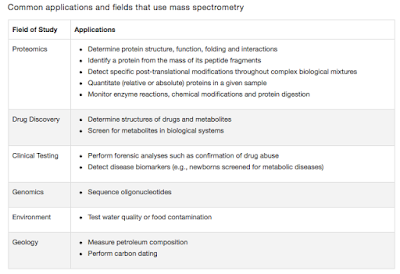Combo Therapy for TB
Greetings
Talking about tuberculosis, its a hard pathogen to beat. The tough part of the problem is that it is a very sluggish bacteria. It is indeed very difficult for antibiotic drugs to be designed. But scientists have come out with breakthroughs. There is a great deal of effort in improving the vaccines, exploring new drugs (See my previous posts here and here). But probably there is another part of the problem. TB, at least in the developing world, is well associated with other parallel infectious conditions especially HIV. That makes a combo drug very attractive candidate to work on.
A trio drug combination referred as PaMZ is making some headlines. The short form stands for 3 drugs PA-824, moxifloxacin and pyrazinamide. Moxifloxacin is a well known drug candidate to treat MDR TB. It is a fourth-generation synthetic fluoroquinolone antibacterial agent, which kills by inhibiting DNA gyrase. Pyrazinmaide is a known drug used in first line treatment of TB. Out of the 3, the 2 drugs are well known with their function and capabilities.
During the preparation of bicyclic nitroimidazofurans, which were investigated as radiosensitizers for use in cancer chemotherapy, Nitroimidazo oxazoles was incidentally, found to possess activity against cultured replicating Mycobacterium tuberculosis. Based on the findings, several derivatives were created. Testing the derivatives showed several compounds with high and specific activity against TB. PA-824 was one of the candidates in the original NAP series. It was not in the competing top list, compared to other derivatives, but proved to be the best when studied using a animal model. The lead compound was CGI-17341, which was not further developed due to its mutagenic activity.
Studies, by comparing it with metronidazole showed a promising activity. Metronidazole was used for comparisons because, it was one of the first candidates to have known activity against latent TB, and PA-824 belongs to same superclass of chemical. The complete name of PA-824 is (S)-2-nitro-6-[4-(trifluoromethoxy)benzyloxy]-6,7-dihydro-5H-imidazo[2,1-b][1,3]oxazine, was identified as the lead 4-nitroimidazo-oxazine. The mechanism of action appears to be via release of RNS (reactive nitrogen species). The drug by itself is inactive and activated by a deazaflavin-dependent nitroreductase (Ddn) from Mycobacterium tuberculosis (It catalyzes the reduction of multiple nitroimidazoles through F420-dependent nitroreduction). In 2002 the Global Alliance for TB Drug Development licensed PA-824 and related nitroimidazole compounds for further development.
The combination of the 3 drugs which was expected to produce faster action comes from the ability of PA-824 and Pyrazinamide to attack latent cells and the efficacy of Moxifloxacin, which is a well known drug for MDR TB. The drug successfully tested in phase 1 and phase 2 trials, which was recently completed. All the hype is about the drug entering phase 3 with high quality results expected. There are expectations as to some other combinations will also work. Some of them are currently in clinical trials. This includes- JPaZ which stands or bedaquiline (J), PA-824 (Pa) and pyrazinamide (Z), which is soon to enter phase 2b (Link). Independently tested drugs such as Clofazimine has shown promising activity and planned to be tested in combinations with other drugs.
CGI-17341 as I mentioned, was a lead compound, but had mutagenic activity. Otsuka Pharmaceutical Co. Ltd, overcame the mutagenicity problem by substituting the 2-position of the side chain which led to the compound OPC-67683. The compound is currently in a Phase 2 study.
The potential high market for antibiotics against TB is leaving a trail of research. In next few years, we will have a lot more Anti-TB compounds, for good

During the preparation of bicyclic nitroimidazofurans, which were investigated as radiosensitizers for use in cancer chemotherapy, Nitroimidazo oxazoles was incidentally, found to possess activity against cultured replicating Mycobacterium tuberculosis. Based on the findings, several derivatives were created. Testing the derivatives showed several compounds with high and specific activity against TB. PA-824 was one of the candidates in the original NAP series. It was not in the competing top list, compared to other derivatives, but proved to be the best when studied using a animal model. The lead compound was CGI-17341, which was not further developed due to its mutagenic activity.
 |
| Fig 1: PA-824 activity. Source |
The combination of the 3 drugs which was expected to produce faster action comes from the ability of PA-824 and Pyrazinamide to attack latent cells and the efficacy of Moxifloxacin, which is a well known drug for MDR TB. The drug successfully tested in phase 1 and phase 2 trials, which was recently completed. All the hype is about the drug entering phase 3 with high quality results expected. There are expectations as to some other combinations will also work. Some of them are currently in clinical trials. This includes- JPaZ which stands or bedaquiline (J), PA-824 (Pa) and pyrazinamide (Z), which is soon to enter phase 2b (Link). Independently tested drugs such as Clofazimine has shown promising activity and planned to be tested in combinations with other drugs.
CGI-17341 as I mentioned, was a lead compound, but had mutagenic activity. Otsuka Pharmaceutical Co. Ltd, overcame the mutagenicity problem by substituting the 2-position of the side chain which led to the compound OPC-67683. The compound is currently in a Phase 2 study.
The potential high market for antibiotics against TB is leaving a trail of research. In next few years, we will have a lot more Anti-TB compounds, for good
Cellitti SE, Shaffer J, Jones DH, Mukherjee T, Gurumurthy M, Bursulaya B, Boshoff HI, Choi I, Nayyar A, Lee YS, Cherian J, Niyomrattanakit P, Dick T, Manjunatha UH, Barry CE 3rd, Spraggon G, & Geierstanger BH (2012). Structure of Ddn, the deazaflavin-dependent nitroreductase from Mycobacterium tuberculosis involved in bioreductive activation of PA-824. Structure, 20 (1), 101-12 PMID: 22244759
Mukherjee T, & Boshoff H (2011). Nitroimidazoles for the treatment of TB: past, present and future. Future medicinal chemistry, 3 (11), 1427-54 PMID: 21879846





Comments
Post a Comment